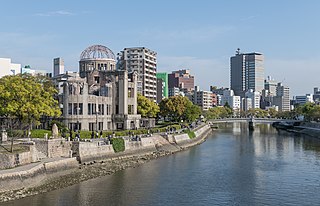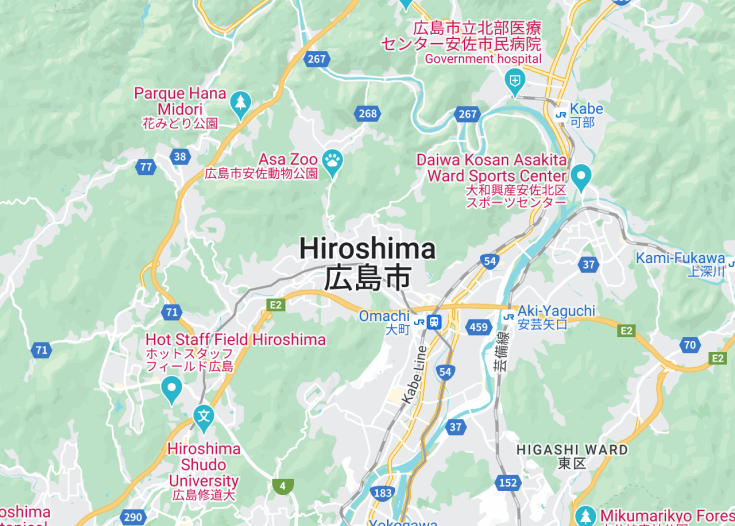Hiroshima, Japan, a city profoundly shaped by its history, stands today as a beacon of peace and resilience. Known globally for the tragic atomic bombing in 1945, Hiroshima has transformed into a vibrant, welcoming city. Its historic Peace Memorial Park and Museum serve as poignant reminders of the past, while the picturesque Shukkeien Garden and Hiroshima Castle offer serene escapes. The city’s culinary delight, Hiroshima-style okonomiyaki, is a must-try. Hiroshima’s powerful mix of history, culture, and recovery continues to inspire visitors from around the world.
Before visiting, spend time at the Peace Memorial Museum to deeply understand the impact of the atomic bomb and the city’s dedication to peace advocacy.
Plan to explore beyond the memorial sites; the vibrant city life, including shopping districts and river cruises, offers a rich, immersive experience.
Hiroshima: A City Reborn from Ashes
| Country | Japan |
| Time in Hiroshima | GMT+9 |
| Language spoken | Japanese |
| Population | 1,199,391 (Source: Japan Statistics Bureau, 2023) |
| Currency | Japanese Yen (¥) (JPY) |
| Airports |
|
Hiroshima, located in the Chugoku Region on Japan’s Honshu Island, is a place of profound historical significance and vibrant culture. The city’s history is markedly defined by the atomic bomb drop of August 6, 1945, which devastated much of its landscape and population. Yet, it has achieved a dynamic recovery and now stands as a symbol of peace and resilience. Today, Hiroshima is known for its beautiful landscapes like the Shukkei-en Garden, a historic spot that has been meticulously restored. It is also home to the Peace Memorial Park, a place dedicated to the legacy of those lost during the war and an enduring appeal for world peace. Visitors can explore the Peace Memorial Museum to gain insight into the effects of the nuclear attack and the city’s journey towards reconstruction. Economically, Hiroshima is vibrant, with its economy bolstered by manufacturing industries including Mazda Motor Corporation. The city also thrives in the educational sector, housing several prestigious universities which attract students nationwide. Tourism is a significant aspect of Hiroshima’s economy thanks to its historical sites and natural beauty. The city’s culinary scene is renowned, with local specialties such as okonomiyaki (savory pancakes) being a must-try for any visitor. Environmental consciousness is evident in Hiroshima’s extensive public transportation networks and commitment to green policies, which helps maintain its scenic landscapes and urban beauty. Reflecting on Hiroshima’s past horrors, the city today stands as a beacon of hope and renewal, continuously working towards a future of peace and sustainability. It epitomizes the power of human resilience and the possibilities of recovery, showing the world that from desolation can come a thriving, vibrant community.
Where is Hiroshima?
Located in the southwestern part of Honshu island, Hiroshima is accessible via numerous global and domestic travel routes.
Distances:
| Route | Distance by car | Time by car |
|---|---|---|
| Tokyo to Hiroshima | 814 km | 10 hours |
| Osaka to Hiroshima | 330 km | 4 hours |
| Kyoto to Hiroshima | 359 km | 5 hours |
What is Hiroshima famous for?
Hiroshima is globally renowned as the city that experienced the world’s first atomic bombing during World War II. Today, it’s admired for its beautiful Peace Memorial Park and Museum dedicated to promoting peace and understanding around the world.
History
Ancient Period: Prehistory – 1589
Hiroshima’s history stretches back to ancient times, with the first recorded inhabitants being the Ainu people. Following these early settlers, Hiroshima became part of the larger geopolitical region during the feudal era. The area was strategically important due to its location and resources, leading to minor conflicts and the establishment of small dominions.
The Feudal Era: 1589 – 1868
In 1589, the modern foundations of Hiroshima were laid when Mori Terumoto constructed Hiroshima Castle, establishing the area as a significant samurai district. This period saw Hiroshima’s rise as a political and military center. The Mori clan ruled the domain, fostering a rich cultural heritage evident in various traditional arts and crafts that emerged during this era.
Meiji Restoration and Industrialization: 1868 – 1945
The Meiji Restoration marked the end of the feudal system and initiated rapid modernization and industrialization. Hiroshima expanded its role and became a major urban center. By the early 20th century, it developed into a significant military base. However, this made it a target during World War II, leading to the catastrophic atomic bombing on August 6, 1945, which changed the city forever.
Post-War Reconstruction and Peace Advocacy: 1945 – Present
The post-war years in Hiroshima were marked by remarkable resilience and reconstruction. The city reinvented itself as a symbol of peace, advocating nuclear disarmament and hosting peace memorials and events. The Hiroshima Peace Memorial Park and Museum, along with the Genbaku Dome, serve as reminders and educators on the horrors of nuclear warfare and the universal quest for peace.
Visit Hiroshima
What to see and do in Hiroshima, Japan
Hiroshima offers a wealth of attractions and activities for visitors. Key sights include the Hiroshima Peace Memorial Park, home to the iconic Genbaku Dome, which stands as a poignant reminder of the city’s past. The Hiroshima Castle, reconstructed after the war, provides insight into feudal Japan and its samurai culture.
- Explore the Shukkei-en Garden for a tranquil experience.
- Visit the Mazda Museum for an intriguing look into the automobile industry.
- Sample local delicacies like okonomiyaki at a traditional Japanese restaurant.
Events in Hiroshima
Hiroshima hosts numerous events throughout the year that reflect its rich culture and history. Prominent events include the Hiroshima Flower Festival in May, which features parades, music, and flowers. The Hiroshima Peace Memorial Ceremony on August 6th commemorates the atomic bombing with prayer sessions and peace messages.
Best time to visit Hiroshima
The best times to visit Hiroshima are in the spring (March to May) and fall (September to November). These seasons offer mild weather and beautiful cherry blossoms or autumn leaves, providing a stunning backdrop for exploring the city and its historical sites.
Is Hiroshima worth visiting?
Hiroshima is undoubtedly worth visiting, not only for its deep historical significance but also for its dedication to peace and recovery. The city offers a unique educational experience that resonates globally, alongside beautiful parks, a rich culinary tradition, and friendly locals. Visiting Hiroshima is an opportunity to reflect on the past and embrace the city’s hope for global peace.









